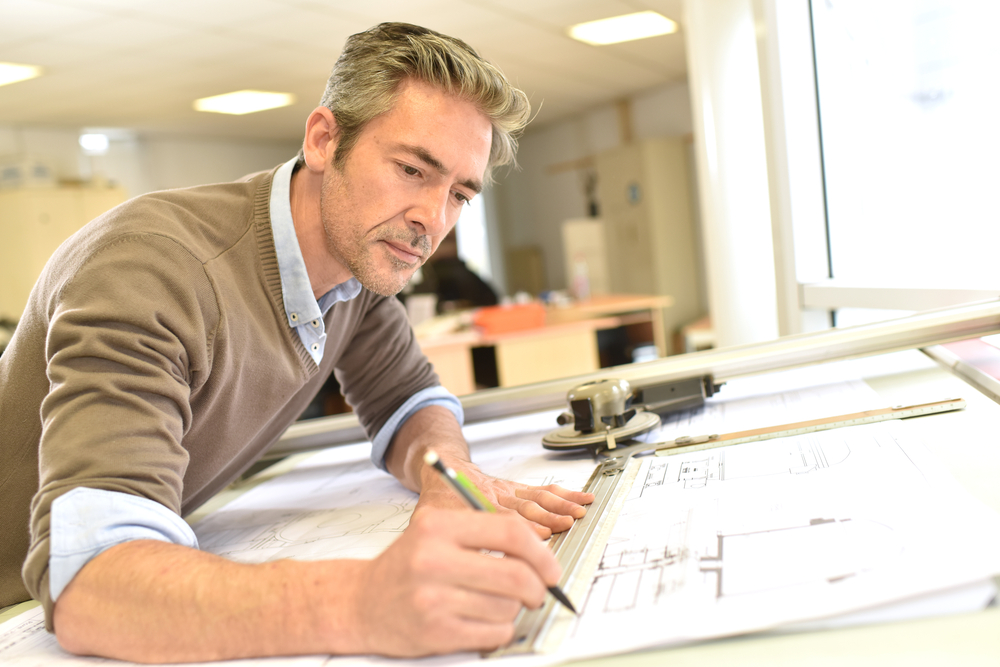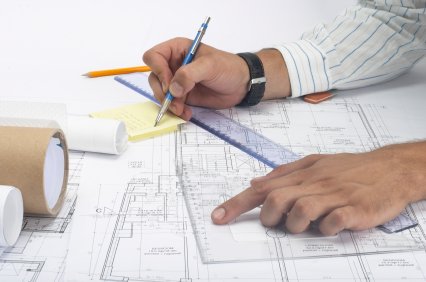Architect Guide to Sustainable Building Materials
Architect Guide to Sustainable Building Materials
Blog Article
Discover the Necessary Skills and High Qualities Every Architect Need To Have
As a designer, you know that success in your area exceeds just technological abilities. It has to do with blending imagination with practicality, promoting partnership, and handling jobs efficiently. Each quality plays an essential role in your capability to create rooms that motivate and work well. What are the certain abilities that can absolutely establish you apart? Allow's discover the crucial characteristics every Architect should cultivate to prosper in this ever-evolving career.
Imagination and Innovation
Creativity and innovation go to the heart of style, driving the layout of rooms that inspire and operate effortlessly. As an architect, you'll need to assume outside the box, pressing borders to produce special remedies for your clients. You'll frequently explore new products, techniques, and innovations to improve your designs. Accepting advancement means remaining in advance of patterns while being adaptable to change.
You'll also attract ideas from various sources-- nature, art, and even daily life can trigger fresh concepts. This capability to blend creativity with practicality enables you to address complex issues, ensuring your styles meet both practical and visual needs.
Strong Communication Abilities
While making exceptional rooms requires creativity, strong interaction skills are equally as vital for engineers. You require to convey your concepts clearly to customers, contractors, and employee. Paying attention is simply as vital; understanding your client's vision aids you develop layouts that truly meet their needs.
You'll usually need to clarify intricate concepts in a manner that's easy to grasp, whether you're offering a proposition or going over products. Reliable communication promotes partnership, ensuring every person gets on the same web page throughout the project.
Structure partnerships is important, as well. When you establish count on and rapport, customers are most likely to share their problems and feedback, resulting in much better end results.
Last but not least, do not underestimate the power of body language and aesthetic aids. They can enhance your message and make your presentations much more interesting. Strong communication abilities not just raise your designs however also reinforce your professional connections in the architectural world.
Technical Proficiency in Style Software
As you navigate the ever-evolving globe of design, understanding design software becomes essential for equating your innovative ideas into substantial strategies. Acquainting yourself with programs like AutoCAD, Revit, and SketchUp will certainly not just enhance your style capacities but likewise simplify your workflow. These tools enable you to develop detailed illustrations, 3D versions, and also simulations that can help you picture and present your principles better.
Exceling in these software applications likewise enhances your cooperation with designers and service providers, as everybody can work from the same digital foundation. In addition, your capacity to adjust to brand-new technologies will keep you affordable in the area. On a regular basis upgrading your skills and checking out new functions can establish you apart from your peers, ensuring your designs are cutting-edge and precise. Ultimately, technical proficiency in design software is a cornerstone of effective style, assisting you bring your visions to life.
Understanding of Engineering Concepts

Comprehending engineering principles likewise allows you to anticipate potential obstacles early in the layout procedure. When you understand just how various materials behave under different problems, you can make educated choices that enhance your designs. Your layouts need to not just be visually pleasing however sustainable and additionally functional.
Additionally, a solid understanding of engineering concepts allows you to introduce within constraints. You can push creative borders while still adhering to safety standards. Eventually, this understanding enriches your architectural practice and establishes you apart in an affordable field.
Job Management Abilities
Efficient task management abilities are crucial for architects, allowing you to manage all elements of a job from perception to conclusion. You'll require to coordinate with various stakeholders, consisting of engineers, clients, and service providers, guaranteeing every person's on the exact same web page. Establishing clear objectives, timelines, and budget plans is fundamental; it aids you keep the task on course and within range.
As a designer, you need to likewise be experienced in danger monitoring, determining potential concerns before they escalate. Solid interaction skills are very important, permitting you to articulate your vision and motivate your group. You'll take advantage of being arranged and detail-oriented, as this assists enhance procedures and avoid expensive delays.
Additionally, versatility is crucial; tasks often progress, and being versatile allows you to react effectively to adjustments. Eventually, your project management abilities can greatly influence the success of your building endeavors, guaranteeing you provide top quality outcomes on schedule and within budget plan.
Focus to Information
While handling projects is vital, your interest to detail can make a substantial difference in the high quality of your work. Every line you attract, every material you choose, and every small spec you keep in mind adds to the general success of a job. You require to be meticulous, making certain that your styles not just satisfy visual standards yet he said also comply with developing codes and guidelines.
This alertness not only saves you time and sources but likewise develops your reputation as a trustworthy Architect. Accept this ability, and allow it assist your style procedure, ensuring that your vision is performed faultlessly.
Adaptability and Problem-Solving Skills
As an architect, you'll commonly encounter unexpected changes in design and job needs. Your capability to accept these changes and discover ingenious options is important for success. Remaining flexible in your strategy not only enhances your analytic abilities but also keeps your projects on course.
Accepting Modification in Design
Welcoming adjustment in style is vital for engineers, specifically when guiding evolving customer demands and arising modern technologies. You need to grow flexibility, as jobs usually change instructions based upon new insights or restraints. Being open to transform enables you to discover ingenious strategies and produce solutions that reverberate with your customers.
When confronted with obstacles, your problem-solving skills come into play. You'll frequently need to rethink principles and adjust intend on the fly, making certain that the last end result lines up with the customer's vision while meeting security and regulatory criteria. By being versatile and resourceful, you not just enhance your layouts but additionally build trust fund with your clients, showing that you can navigate the intricacies of contemporary design successfully.
Cutting-edge Solutions to Challenges

Flexibility in Job Monitoring
While maneuvering the intricacies of project administration, adaptability comes to be an important possession for engineers. You'll usually deal with unanticipated difficulties, from design modifications to budget plan restraints, needing fast thinking and versatility. Accepting change allows you to pivot your approaches and locate innovative remedies, making certain job success.
Solid problem-solving abilities are crucial; they allow you browse around here to examine scenarios, weigh alternatives, and implement effective services on the fly. When collaborating with diverse teams, being open to responses and different concepts cultivates cooperation and stimulates imagination.
Often Asked Questions
What Educational Background Is Needed to Become a Designer?
To come to be a designer, you'll need at least a professional level in style, typically a Bachelor's or Master's. Getting and completing a teaching fellowship licensure with tests is essential for your career improvement.
How Important Is Networking in the Style Area?
Networking's important in style. It helps you build connections, uncover task opportunities, and gain understandings from skilled experts. By connecting with others, you improve your job potential customers and remain upgraded on sector trends and developments.
What Are the Typical Profession Paths for Architects?
Usual occupation courses for engineers consist of layout roles in companies, project monitoring, metropolitan preparation, and specialized areas like lasting style. Architect. You may additionally discover mentor or consulting, relying on your interests and experiences
Exactly How Can Architects Remain Updated With Market Patterns?
To remain updated with sector trends, you ought to regularly participate in meetings, join professional organizations, Continued subscribe to pertinent magazines, and involve with on-line discussion forums. Connecting with peers likewise aids you acquire understandings right into arising growths in architecture.
What Duty Does Sustainability Play in Modern Design?
Sustainability forms modern architecture by highlighting power effectiveness, source preservation, and environment-friendly products. You'll create rooms that lessen ecological impact, boost passenger health, and react to environment obstacles, making your layouts a lot more impactful and appropriate.
While making impressive areas calls for imagination, solid interaction skills are just as critical for engineers. Solid communication skills not just boost your styles but additionally reinforce your specialist partnerships in the building globe.
Efficiency in layout software lays the groundwork for a much deeper understanding of engineering principles, which is vital for architects.As an engineer, you'll commonly face unforeseen adjustments in layout and job needs.Accepting change in style is crucial for architects, particularly when guiding developing client demands and arising innovations.
Report this page